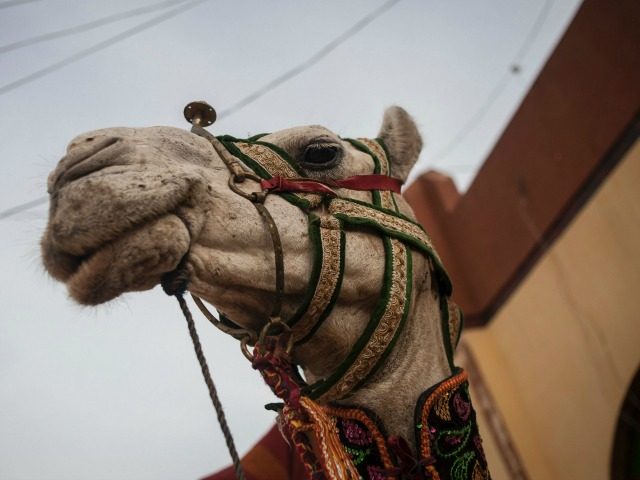Sweihan (United Arab Emirates) (AFP) – Women clad in emerald green abayas and men in crisp white gandoura gowns, Emirati folk dancers sway to the steady beat of a Bedouin drum against the desert skyline.
The show is part of the 11th edition of the Sultan bin Zayed Heritage Festival, held each year in Sweihan, 100 kilometres (60 miles) from the United Arab Emirates capital Abu Dhabi.
The festival aims to preserve the ways of desert life and introduce UAE youth to their heritage at a time when tradition is increasingly being overshadowed by glitzy city life.
With the rise of Dubai and Abu Dhabi, “it is very important to keep on with the traditions, with the culture of the country and the people”, said Sheikh Sultan bin Zayed al-Nahyan, chairman of the Emirates Heritage Club.
“We have to encourage young people to come, (especially) through schools,” Sheikh Sultan, a son of the UAE’s founding father, the late Sheikh Zayed bin Sultan al-Nahyan, told AFP.
The two-week event features artisanal souks, traditional music, camel races — and a series of camel beauty contests.
Dromedary contestants are divided into seven categories, including “two-year-old virgin female camels”, “pregnant female camels about to give birth”, and “five-year-old (and above) male camels”.
The competition, dubbed camel “mazayna” (beauty) in Arabic, aims to “encourage breeders and owners to breed authentic strains of camels and protect them from hybridisation and blood crossing and create an atmosphere of honest competition … to ensure the breeding of the most beautiful camels”, the festival brochure reads.
– Eyelash length, sheen of hair –
The criteria, as laid out in the brochure, are transparent: jurors base their scores on the shape of the camels’ head, neck and hump as well as their posture.
Eyelash length and the sheen of the camels’ hair also factor into the marks.
Awaiting the results, the animals are kept calm by their owners, lined up in front of a fleet of 80 shiny white 4X4 cars beloved of Gulf Arabs to be awarded to the first-place winners.
In earth-toned traditional garb, including a floor-length gandoura and turban, Sheikh Sultan watches the contest from a plush oversized armchair.
He greets the overall winner and her Qatari owner warmly to thundering applause, as a drone flies overhead to capture the scene.
Runners-up in second to 10th place receive between 10,000 and 45,000 dirhams (between $2,700 and $12,250) each.
In 2005, Abu Dhabi produced the world’s first test-tube purebred camel.
The oil-rich emirate, one of seven making up the UAE, also began using remote-controlled robot riders in its camel races that year.
Camel racing is an extremely popular traditional sport in the UAE, where people spend millions on acquiring the fastest animals.
The Sultan bin Zayed festival is one of the few remaining events at which human jockeys ride camels in races, rather than remote-controlled robot riders.
The UAE officially banned child jockeys in 1993 although abuses remained widespread until 2005.
According to the United Nations children’s fund UNICEF, thousands of boys from Bangladesh, Pakistan and also Sudan have been forced to become jockeys in the Middle East, where their small size is valued on the competitive camel racing scene.

COMMENTS
Please let us know if you're having issues with commenting.